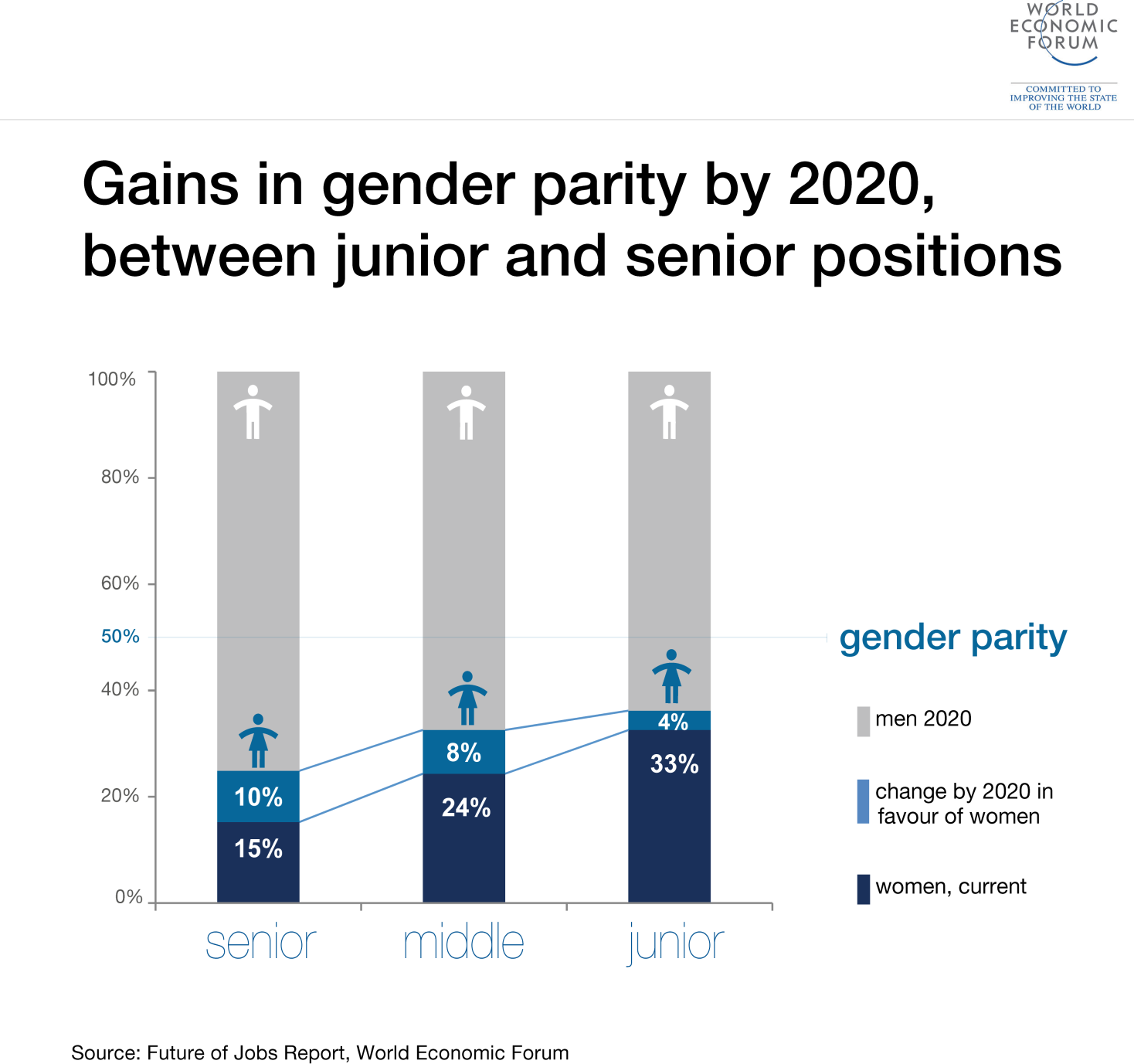5 charts that show how businesses really see gender parity

Employees work inside the Minerva Project office in San Francisco, California
Image: REUTERS/Stephen Lam
Vesselina Stefanova Ratcheva
Head of Metrics, Communication Strategy and Coordination, World Economic ForumStay up to date:
Future of Work
Women continue to make up less of the world’s labour force than men, and where they do take part in the formal economy their earnings for similar work are lower, and their progression up the ladder often stalls. This is how the talents of half the world’s potential workforce are wasted or underutilized.
Still, over the past 10 years, while progress has been slow - only 3% of the global economic gender gap has closed - women’s participation in the workforce is no longer perceived as a social issue alone. It is also recognised as a business issue, costing women, companies and ultimately entire economies.
Many business leaders are increasingly aware that tackling barriers to equality has the potential to unlock new opportunities for growth. Here’s how businesses we surveyed view rationales for - and barriers to - gender equality today.
1. The talent and strategy executives we surveyed recognized a wide range of rationales for promoting workplace gender parity. While fairness and equality tops the ranks, a similar number of people described a range of rationales more closely tied to the success of their business, such as enhancing innovation and decision-making or reflecting the gender composition of their customer base.

2. Globally, more women than men are enrolled in universities - and compared to 10 years ago they participate more fully in professional occupations. Yet many industries’ talent pipelines dwindles near the top. On average, junior positions feature one woman for every two men in the room. This figure halves by the time women reach senior level positions and gets even smaller at the CEO level.

3. But the junior to senior drop-off is more pronounced in some industries versus others, with the largest drop-offs in ICT, health and basics industries and the smallest ones in media, entertainment & information, consumer and professional services industries.
4. Our respondents’ views concerning on the barriers holding women back vary by industry and often reflect different industry cultures in addition to overarching economic and societal factors. The ones most visible through the data are the dual burden of caregiving and breadwinning, unconscious biases, traditional organizational practices in the workplace (lack of flexible working), a lack of role models, confidence, and the traditional divide between women and men in STEM education.

5. Across all industries, companies reported that they found women harder to recruit, at all levels. The reported ease (or in this case, difficulty) of recruiting women is directly proportional to the existing gender composition of an industry.

6. However, nearly all businesses expect gender gaps to narrow. Projecting their gender break-downs for 2020, companies expect improvement, spread unevenly across different industries. This includes an overall 8 to 13 percentage point increase in senior roles for women. This suggests companies expect that the workforce strategies they currently employ to promote gender parity will be relatively successful in retaining and promoting the majority of their incoming female talent.

Don't miss any update on this topic
Create a free account and access your personalized content collection with our latest publications and analyses.
License and Republishing
World Economic Forum articles may be republished in accordance with the Creative Commons Attribution-NonCommercial-NoDerivatives 4.0 International Public License, and in accordance with our Terms of Use.
The views expressed in this article are those of the author alone and not the World Economic Forum.
Forum Stories newsletter
Bringing you weekly curated insights and analysis on the global issues that matter.
More on Forum InstitutionalSee all
Victoria Masterson, Stephen Hall and Madeleine North
March 25, 2025
Lorez Qehaja
March 19, 2025
Madeleine North
January 28, 2025





